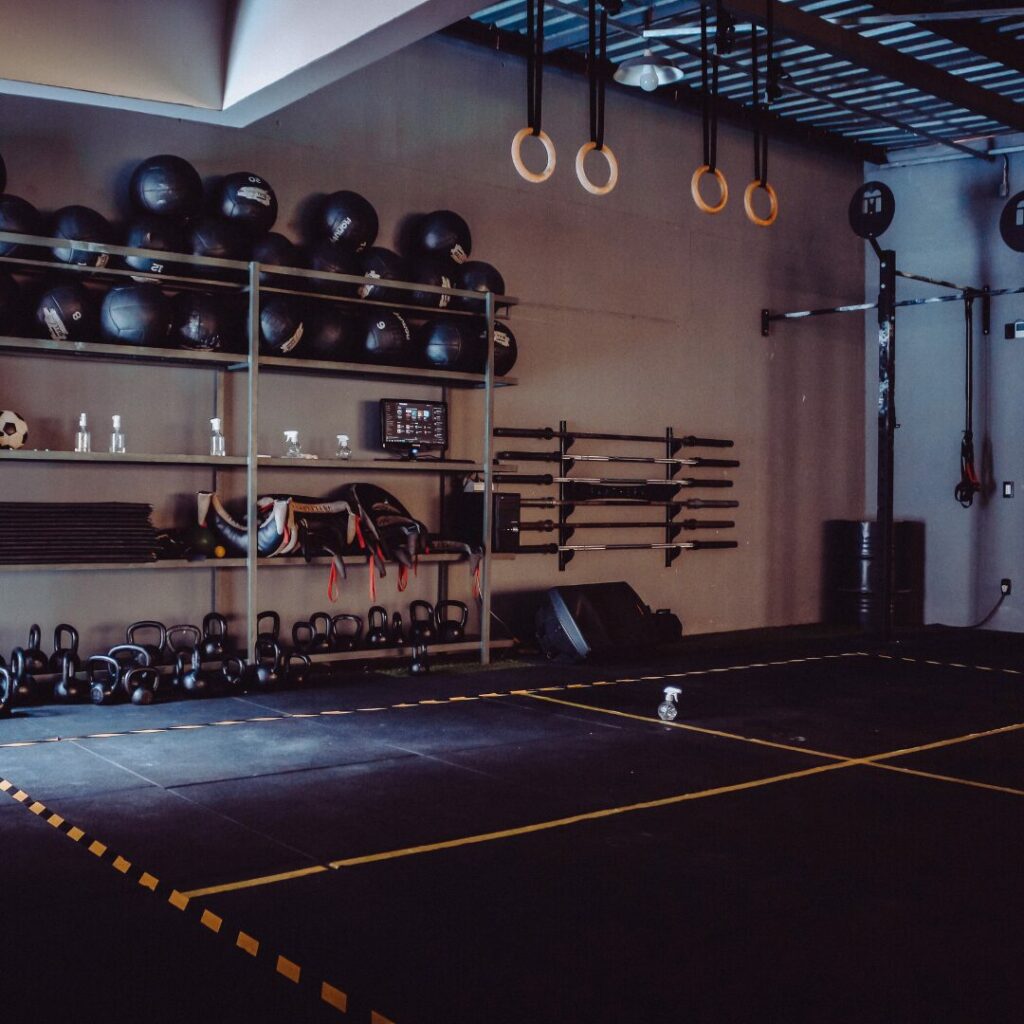Embark on a journey where soreness transforms into power, where each ache is a stepping stone to resilience. Picture this: the aftermath of a rigorous workout, the satisfying soreness that whispers, “You’ve pushed your limits.” Welcome to the realm of Delayed Onset Muscle Soreness (DOMS), a story of stress, repair, and adaptation.
However, let’s first debunk a myth. Soreness isn’t the sole measure of success. This is where adaptation comes into play. Imagine a symphony where your body’s feedback guides your fitness story. Too often, constant soreness signals stagnation rather than growth.
In navigating the world of muscle discomfort it’s important to understand the difference between DOMS, acute soreness, injuries, and overtraining.
DOMS arrives fashionably late at 24 to 72 hours post workout. It’s your body’s acknowledgment of uncharted territories. It’s intense, muscle-specific, and a gradual onset. Key though is that it won’t shackle your movement. It’s a sign of progress, not a roadblock.
Comparatively, acute soreness is a temporary burn during exercise. Injuries signal sharp pain, swelling, or bruising. Overtraining brings persistent fatigue and declining performance.
Let’s dive into these differences, learn to listen to our bodies, and sculpt a workout narrative that balances growth and recovery.

Why Do Muscles Get Sore After Strength Training?
You know that feeling of soreness after a tough workout? It’s called Delayed Onset Muscle Soreness (DOMS). DOMS can occur after both intense or unfamiliar exercises. Further, sudden changes in workout routines, even if not extremely intense, can still lead to muscle soreness. In this post our main focus will be on strength training, but know that DOMS doesn’t just occur with this form of exercise.
So, what’s happening in our muscles during strength training that leads to DOMS? Let’s break it down.
After a robust strength training session, tiny changes happen within our muscle fibres. It’s an interplay of 3 steps: stress, repair and adaptation.
Step 1: Stress
DOMS is mostly caused by eccentric contractions. This occurs when muscles lengthen under tension, for example, when you lower a weight. This controlled stress causes tiny tears in muscle fibres, and surprisingly, these tears are a good thing—they’re essential for building muscles. The overall cause may not be quite this clear cut but it is acknowledged that DOMS is not a bad thing, it’s our body’s reaction when you’ve done exercise its not accustomed to.
Measuring a good workout:
So, working out harder might result in DOMS so I should wear it like a badge of honour. Right? Not exactly.
Experiencing DOMS is not a sign of a great workout. Not experiencing DOMS is not an indication of a bad workout. Instead, constantly feeling sore is probably going to be detrimental as you can’t workout as hard as you otherwise would, and you would feel fatigued. If you’ve been working out for a while, and sticking to your workout schedule, not switching things up every week, and you are constantly sore, this means that you are not adapting to your workout. If this is you, consider your workout program, recovery, sleep and overall stress levels.
For example, if you’ve just hit arms yesterday and your biceps are sore, maybe focus on them less today. A well-balanced workout routine will not have you hitting the same muscle group with the same intensity on back-to-back days anyway. Just be sure to either tone down the intensity or hit a different muscle group.
DOMS or no DOMS, you are not really missing out. If you are looking to measure a good workout, stop feeling accomplished when you are sore, instead concentrate more on increased strength or range of motion over time. Build a good routine and habits that stick, one step at a time.
Progressive Adaptation:
Adapting your workout routine over time is essential for continuous progress. Strength training plans need to evolve to prevent plateaus and accommodate changes in fitness levels, depending on your unique goals.
Progressive adaptation involves adjusting variables such as intensity, volume, and exercise selection to ensure that your muscles are continually challenged, leading to sustained improvement. This means that you will experience DOMS throughout your journey, not just when you are starting out.
Remember though, you may not need to change up the exercises as much as you think. There is absolutely no need to rewrite your entire plan every few weeks. You may however find that on a couple exercises that you can lift a heavier weight or complete a couple more reps. Finding a balance between consistency and progressive adaptation is key.
Listening to Your Body’s Feedback:
Paying attention to your body’s feedback is integral to adapting your workout routine. If certain exercises consistently lead to discomfort or if progress stalls, it may be time to modify the routine or increase the intensity. Flexibility and a willingness to adjust based on how your body responds contribute to a sustainable and effective long-term strength training plan.
Be mindful if your body is not adapting well, however, don’t forget that changing a routine can result in DOMS so don’t be restructuring your approach too frequently. Give your body a few weeks to adapt to a new program or stimulus before altering again.

Step 2: Repair:
As mentioned, after a robust strength training session, tiny changes happen within our muscle fibres. After these contractions and tears, the body reacts with inflammation. This starts the natural healing of the tiny tears in the muscle tissue. Inflammatory cells, growth factors, and other substances rush in to help with the repair process, causing the discomfort and soreness we experience as DOMS. Muscle repair also involves making new proteins to replace and strengthen the damaged fibres. This is crucial for muscle growth, increased strength, and better overall muscle function.
A sustainable approach to strength training involves finding the right balance between intense workouts and recovery. While challenging workouts stimulate progress, adequate recovery periods are equally crucial for preventing burnout and overtraining.
Structuring your strength training plan with a balance between challenging sessions and rest days promotes sustainability over the long term.
Should you workout even if you are sore?
Yes, don’t use DOMS as an excuse to skip a workout. Reducing your overall movement can actually make DOMS worse. It’s better to stick to the habits you are working so hard to build and maintain. Do that workout.
What does DOMS feel like?
You may not be able to use that muscle the way you ordinarily do. It might feel tighter, more fatigued and your flexibility might be reduced. You may even notice that your strength has decreased. Don’t worry though, its temporary. You might not be in contention for beating your personal best or any world records while you have DOMS, but know that your muscles are going to bounce back.
Step 3: Adaptation:
As protein synthesis happens, muscles adapt to the stress from strength training, becoming more resilient and prepared for future challenges.
Understanding DOMS means seeing soreness as a sign that our muscles are working hard and adapting to the demands that we’re putting on them.
The key is finding a balance between pushing our limits for growth and giving our bodies time to repair and rebuild. Rest days, proper nutrition, and other recovery strategies help strike this balance, making our strength training approach sustainable and effective.

Recognising Delayed Onset Muscle Soreness (DOMS):
Understanding how to differentiate DOMS from acute soreness, injuries, or muscle overuse is crucial to optimise your training routine. Below are some factors of DOMS to consider.
Time Delay:
DOMS is different from the soreness you feel right after a tough workout. With DOMS, the soreness takes time to show up – it gradually appears and usually gets the most intense about 24 to 72 hours after you’ve finished exercising.
Intensity and Duration:
DOMS lasts longer and feels more intense compared to the soreness you get right after a workout. It can range from a dull ache to a stronger pain and might stick around for a few days. On the other hand, acute soreness usually goes away pretty quickly after you finish the exercise.
Specificity to Movement:
If you feel sore in the exact muscles you worked out recently, it’s probably DOMS. This kind of soreness is specific to the muscles you focused on during your workout. This makes it different from general tiredness or soreness in your muscles.
Gradual Onset:
DOMS doesn’t give you sudden sharp pain like injuries or muscle overuse might. Instead, it starts slowly, maybe with a bit of discomfort, and then gets more intense over time. This slow buildup is a clear sign of DOMS and helps distinguish it from more sudden problems.
Normal Range of Motion:
DOMS usually doesn’t restrict your movement range. If you can move the sore muscles without feeling sharp pain, it’s likely DOMS. Still, if you have persistent or severe pain, it’s essential to talk to a healthcare professional.

DOMS or something else?
Recognising the differences between acute muscle soreness, DOMS, and potential injuries is crucial for tailoring your fitness routine and ensuring a balanced approach to exercise.
While DOMS is a normal part of the muscle adaptation process, it’s important to listen to your body. If you’re unsure about the nature of your discomfort, seeking professional advice is essential.
Embracing discomfort doesn’t mean ignoring harm; it’s about pushing limits safely and minimising risks.
Pain is different from the discomfort of DOMS. Pushing through severe pain can lead to injury. It’s crucial to distinguish between the discomfort of muscle soreness and actual pain.
Recognising Acute Muscle Soreness
Acute muscle soreness is characterized by a burning sensation as you push your muscles to their limits, often occurring during or immediately after intense exercise. This sensation typically disappears shortly after stopping the exercise.
Understanding Acute Muscle Soreness:
Acute muscle soreness is a result of the immediate stress placed on your muscles during intense physical activity. It’s a temporary discomfort that arises as you challenge your muscles beyond their usual capacity. This burning sensation is a natural response to the increased demand on your muscles during exercise.
Transient Nature of Acute Soreness:
Unlike DOMS, which develops gradually and reaches its peak in the following days, acute muscle soreness is transient. It tends to subside relatively quickly once the specific exercise or workout is concluded. This rapid relief distinguishes acute soreness from the prolonged and delayed onset nature of DOMS.
Addressing Acute Soreness:
While acute muscle soreness is a common part of the immediate exercise experience, it’s important to pay attention to your body’s signals. Recognizing the difference between acute soreness and more prolonged discomfort like DOMS helps you make informed decisions about your training intensity and recovery strategies.
Incorporating Recovery:
To address acute muscle soreness, consider incorporating proper warm-up and cool-down routines into your workouts. These routines can help prepare your muscles for the demands of exercise and facilitate the recovery process, minimizing the intensity and duration of acute soreness.
Recognising injury
If you’re experiencing symptoms such as swelling, bruising, or sharp, localized pain, it could be indicative of an injury rather than DOMS. It’s crucial to pay close attention to these signs, as they may signify a more severe issue that requires prompt attention and professional evaluation.
Differentiating Injury from DOMS:
DOMS, characterized by general muscle soreness and discomfort, typically involves a widespread feeling of tenderness in the affected muscle groups. In contrast, injury-related symptoms often include specific and acute sensations such as sharp pain or localized tenderness in a particular area.
Swelling and Bruising:
Swelling and bruising are common indicators of injury and may not be typical of DOMS. If you notice pronounced swelling around a joint or muscle, or if there’s visible bruising, it’s essential to consider the possibility of an injury. These signs suggest trauma beyond the micro-tears associated with DOMS.
Sharp, Localised Pain:
Sharp, localised pain during or after exercise is a red flag for potential injury. While DOMS typically involves a more diffuse and generalized discomfort, sharp pain in a specific area may indicate tissue damage or strain that requires professional assessment.
Seeking Professional Evaluation:
If you’re uncertain about the nature of your discomfort or if you notice signs of injury, it’s advisable to seek professional evaluation. Consulting with a healthcare professional or a qualified fitness expert can help determine the appropriate course of action, whether it involves modification of your exercise routine, targeted rehabilitation, or further medical attention.
Prioritising Safety:
Prioritising safety and addressing potential injuries promptly is essential for long-term well-being. While pushing through the discomfort of DOMS can be a normal part of the muscle adaptation process, recognising when symptoms may indicate an injury ensures a balanced and safe approach to your fitness journey.
Recognising Signs of Overtraining
In the pursuit of optimal health and fitness through strength training, it’s crucial to cultivate a deep awareness of your body’s signals, especially those indicating potential overtraining. Recognizing these signs early on can prevent burnout, injury, and setbacks in your fitness journey.
Persistent Fatigue and Exhaustion:
Overtraining often manifests as persistent fatigue that extends beyond the typical post-workout tiredness. Feeling consistently drained, both physically and mentally, may be a sign that your body needs more rest and recovery.
Acknowledging and addressing this fatigue is essential to prevent the accumulation of stress on your body’s systems.
Decline in Performance:
A noticeable decline in performance, despite consistent effort, could be indicative of overtraining. This decline may manifest as an inability to lift weights that were previously manageable or a decrease in overall workout performance.
Paying attention to performance trends can help identify when it’s time to modify your training routine and allow for adequate recovery.
Disturbed Sleep Patterns:
Overtraining can disrupt your sleep patterns, leading to difficulties falling asleep or staying asleep. Poor sleep quality not only hinders recovery but also contributes to increased stress levels and overall fatigue.
Monitoring changes in sleep patterns provides valuable insights into your body’s response to training stress.
Persistent Muscle Soreness:
While Delayed Onset Muscle Soreness (DOMS) is a normal part of strength training, persistent and heightened muscle soreness that lingers for an extended period may indicate overtraining. This can be a signal that your muscles are not getting sufficient time to recover between sessions.
Recognising the difference between normal soreness and prolonged discomfort is essential for adjusting your training regimen accordingly.

Conclusion
As we wrap up our exploration of muscle soreness, remember that each ache tells a story of your body evolving. Dive into the differences between DOMS, acute muscle soreness, potential injuries, and the shadows of overtraining. In this narrative, each sensation is a page turned, showing your commitment and resilience.
As you navigate the realms of discomfort, let it guide your progress. Distinguish between the ebb and flow of muscle adaptation and the warning whispers of overtraining. Your fitness journey is a symphony, with DOMS playing a part in the richness of growth.
In this journey of strength and recovery, find inspiration in your body’s signals. From the pulsating ache of hard-earned soreness to the transient burn of acute stress, each contributes to the epic tale of your well-being.
So, embrace the complexities, celebrate the victories, and honour the wisdom your body shares.


Wow that was unusual. I just wrote an incredibly long comment but after I clicked
submit my comment didn’t appear. Grrrr… well I’m not writing all that over again. Anyhow, just
wanted to say excellent blog! https://Tri1ls.webflow.io/